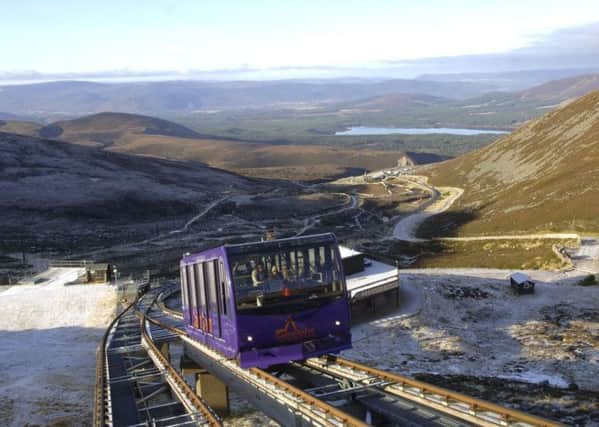What a winter without the funicular could mean for CairnGorm Mountain ski area


This will cause significant problems, not just for the ski centre, but also for the many local businesses that depend on it to bring snowsports enthusiasts to Speyside each winter. Local councillor Bill Lobban has described the situation as “very concerning” while Allan Brattey of the Aviemore Business Association, which represents over 80 businesses in the area, has called it “a disaster”.
Looking at a piste map of CairnGorm, it’s not immediately obvious why the funicular is such a big deal. After all, there appear to be three surface lifts in addition to the funicular, all capable of taking people up the hill from car park level: the Car Park T-Bar, the Day Lodge Poma and the Fiacaill Ridge Poma. Getting hauled up a mountain with a little stick clamped between your legs might not be as comfortable as being whisked up to the summit inside a nice warm train, but in the event of the funicular being declared unusable for some or all of the coming ski season, couldn’t people simply use those lifts instead?
Advertisement
Hide AdAdvertisement
Hide AdUnfortunately it’s not quite as simple as that. While it’s true that these three lifts are theoretically capable of shifting a significant number of paying customers up the hill – the Day Lodge Poma, for example, can transport 800 skiers per hour, about the same as the funicular – they can only operate if there’s good snow cover all the way down to the car park (otherwise they’d simply be dragging people uphill through a mixture of rocks, mud and heather, and it’s hard to imagine anyone paying money for that).
The car park is approximately 635 metres above sea level, while the funicular top station, where most of the upper runs begin, is at 1,097 metres. In a typical winter, the snowline often hovers somewhere between those two elevations – or, to put it another way, there are often days when there is great snow on the runs on the top half of the mountain, but these can only be accessed via the funicular, as the surface lifts starting in the car park don’t have enough snow on their up-tracks to open.
So, the race is now on to save CairnGorm’s season by ensuring that these low-lying surface lifts have enough snow to operate. A recent press release issued by CairnGorm spoke about “utilising snowmaking equipment at lower levels”, and this must surely include at least one state-of-the-art Snowfactory (see last week’s column) along with a battery of conventional snow guns the likes of which Scottish skiing has never seen before. It’s a huge challenge and the clock is ticking; the skiers and boarders who flock to the ‘Gorm each year – not to mention the local businesses which rely on their custom – will all be desperately hoping the rescue plan is a success.
The irony of this situation, as regular readers of this column will no doubt have realised by now, is that it’s only a little over a year since Natural Retreats, which operates the ski centre, and HIE, which leases them the site, agreed to rip out all the disused chairlift pylons in the Coire na Ciste side of the resort, in the face of fierce opposition from local skiers and business owners. The pressure group Save the Ciste pointed to a 2010 report prepared by the Swiss chairlift company Rowema which estimated it would have cost in the region of £300,000 to renovate the lower of the two chairlifts on that side of the hill, and suggested that amount wasn’t far off the £267,000 spent on the clear-up of the mountain which included the demolition of said lifts.
The great advantage that chairlifts have over surface lifts, of course, is that they don’t need an unbroken strip of snow running from top to bottom in order to operate. So, had Natural Retreats and HIE decided to renovate the Ciste Chairlift last year, rather than demolishing it, the work might have been nearing completion now, and the newly rescued lift might have whirred into life just in time to avert disaster.
Even if the problems with the funicular can be resolved relatively swiftly, perhaps the current crisis will give the decision-makers cause to reassess their current uplift policy, and look again at the benefits of chairlifts on the Ciste side of the hill.